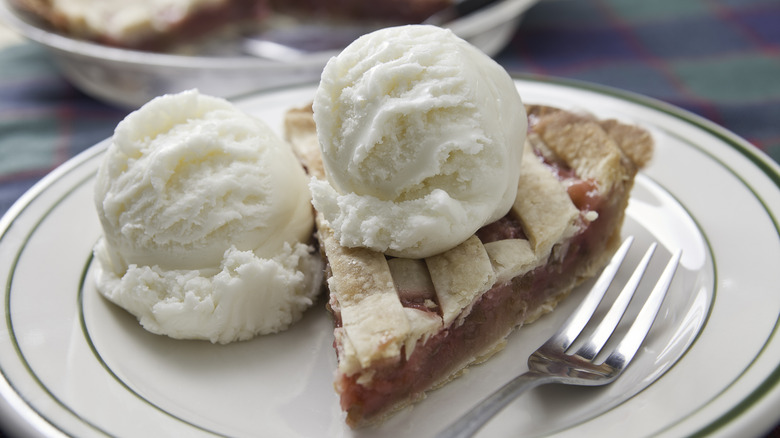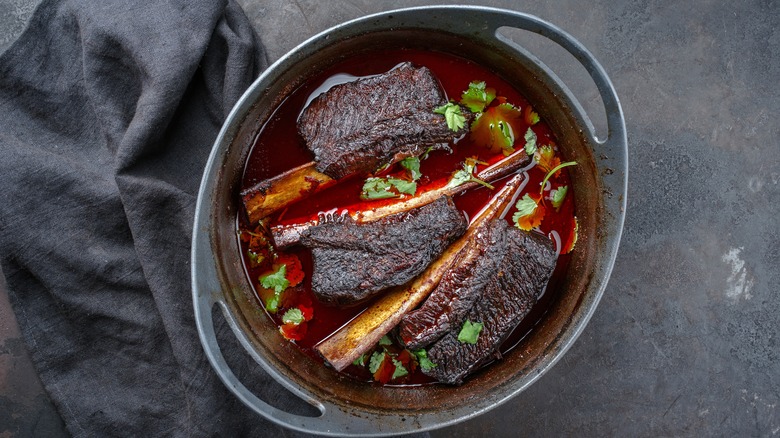How The Term 'À La Mode' Became Commonplace On Menus
We've all heard the phrase "à la mode" accompanying apple pie, chocolate cake, and even peach cobbler. We all know it means "with ice cream on top," right? Yes ... and no. The term "à la mode" was never meant to be used in desserts or the food world.
"À la mode" translates directly to "in the fashion" or fashionable. Before the 17th century, that appears to be all it meant. It was eventually used in some kitchen contexts, such as in beef à la mode — a French pot roast made with special techniques like larding, fresh herbs, and wine. Because it was novel (in the fashion) at the time it was made, it earned the à la mode title. Sometime around the 19th century, though, the phrase came to mean what we Americans know it as today. Several people from this time staked a claim as the first to use it in the dessert context, but none of these have been verified or widely accepted as the true answer.
If none of them are the true origin of the term, then how did it come to be used that way? The term was used to describe desserts like meringue pie, but there is no clear record of it translating to "served with ice cream" until 1895, in a Chicago Daily Tribune article describing a pie with ice cream atop as à la mode. After this, it became the commonplace term for "with ice cream" across the United States.
À la mode is not the only à la food
Aside from beef à la mode, there are plenty of other recipes that use similar French wording. In the 19th-century upscale American food and beverage scene, patrons had to learn a "code" to understand what they were ordering. Sometimes, the term came from a specific person or group of people; for instance, à la Milanaise indicated your meat would be prepared using the Milan method (a precise way of breading/frying meat). Or, you could order a dessert à la Nesselrode (referencing a Russian leader), which meant your item would come with chestnuts in some way. The terms are different now, with both dropping "à la," but they represent the old way of high-end American restaurants. À la carte dining also emerged in the 19th century to represent a shift from fixed-price meals to a more flexible dining option, though this term has stayed the same in today's language.
Because these terms were not usually self-explanatory, they eventually became a problem. As the world changed in the 20th century, restaurants and patrons changed too; the terminology was becoming cumbersome, so most restaurants removed it from menus. The terms may have made a comeback post-Prohibition for a short time in limited restaurants, but for the most part, they were out. The only one that has stuck in the modern vernacular is à la mode, and given that apple pie à la mode is an American staple (at least to Vermont officials), it's likely not going anywhere any time soon.

